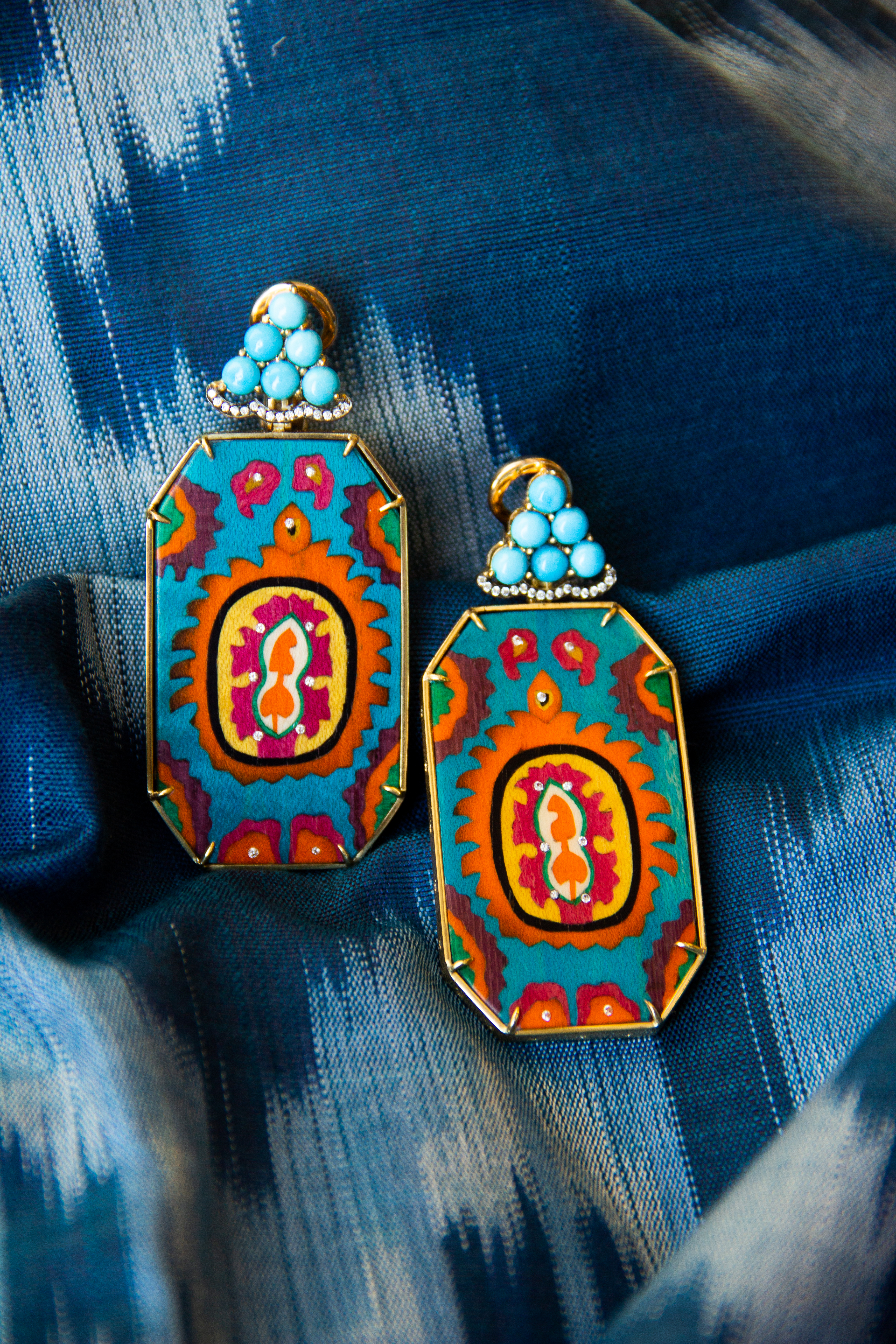PRESS
For all enquiries
press@silviafurmanovich.com

Silvia Furmanovich is pleased to debut a new collection entitled Silk Road. The collection is inspired by Furmanovich’s latest travels to several historical cities throughout Uzbekistan - including Tashkent, Samarkand and Khiva -, where the silk route played a critical role.
The term “Silk Road,” or Seidenstrasse, was first introduced in 1877 by the German geographer Ferdinent Paul Wilhelm. Much more than silk was traded along this 4,000-mile ancient trade route between China and the Roman Empire - there was also lapis, turquoise and gold - and it was richer still in the exchange of ideas and concepts.

Furmanovich embarked on a quest to research diverse textile traditions by visiting the finest fabric makers, silk weavers and vintage textile dealers throughout the Central Asian country. The designer was inspired to represent the textiles she discovered within rich suzani and ikat traditions, using her signature techniques of marquetry, miniature painting and bamboo weaving.

Suzani is a type of decorative, hand-embroidered textile displaying rich color and bold patterns. Named after the Persian word for needle, they first originated from nomadic tribes in Tajikistan, Uzbekistan and Kazakhastan. Their primary use was within the yurt (a Central Asian nomadic tent) as a protective wrapping for belongings, and were also traditionally made by brides and their mothers as part of a dowry presented to grooms.
Ikat is a celebrated dyeing technique used to pattern textiles. The process is formed by binding individual silk yarns or bundles of yarns with a tight wrapping applied in the desired pattern. The yarns are then dyed. This process may be repeated multiple times to produce elaborate, multicolored patterns. When the dyeing is finished all the bindings are removed and the yarns are woven into cloth. In ikat, the resist is applied to the yarns before they are woven into cloth.

A new series of earrings is meticulously hand-crafted by female weavers on a loom using pure silk; there are more than 1,600 tiny knots on singe pair of earrings and the pieces are a feat in terms of superb craftsmanship. The collection also reflects a fascination with the interchange of ideas and concepts, as well as cross pollination of cultures, which has been so central to Furmanovich’s work.